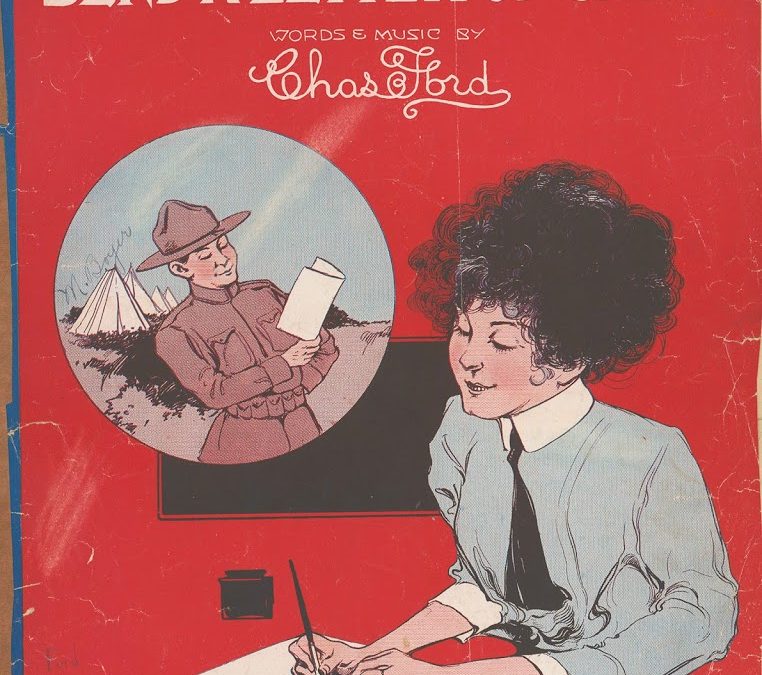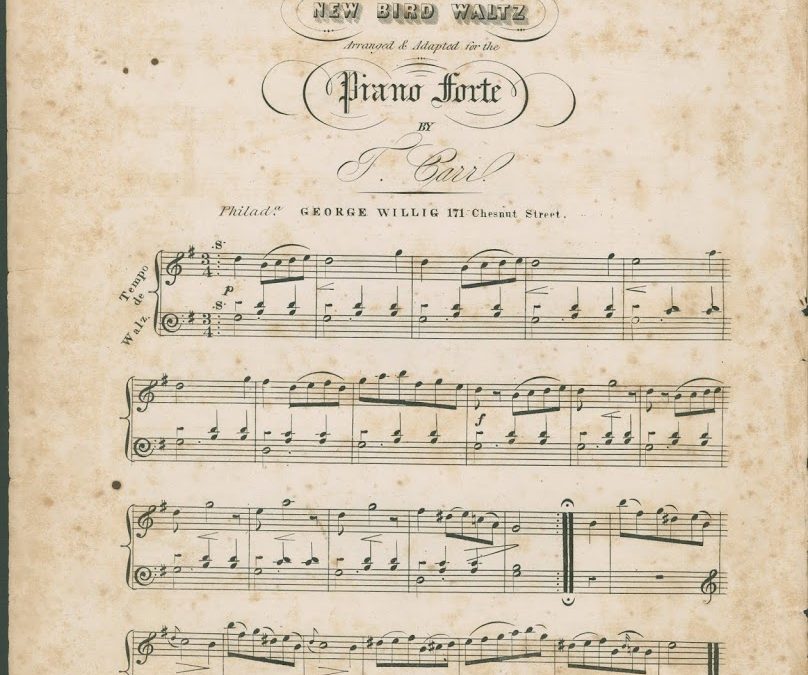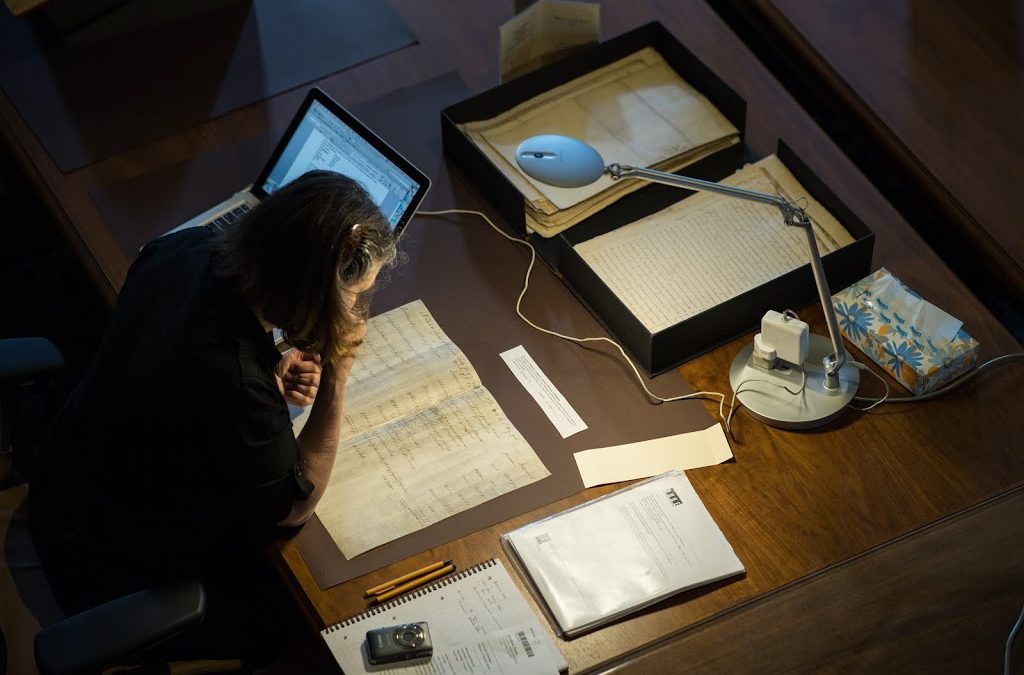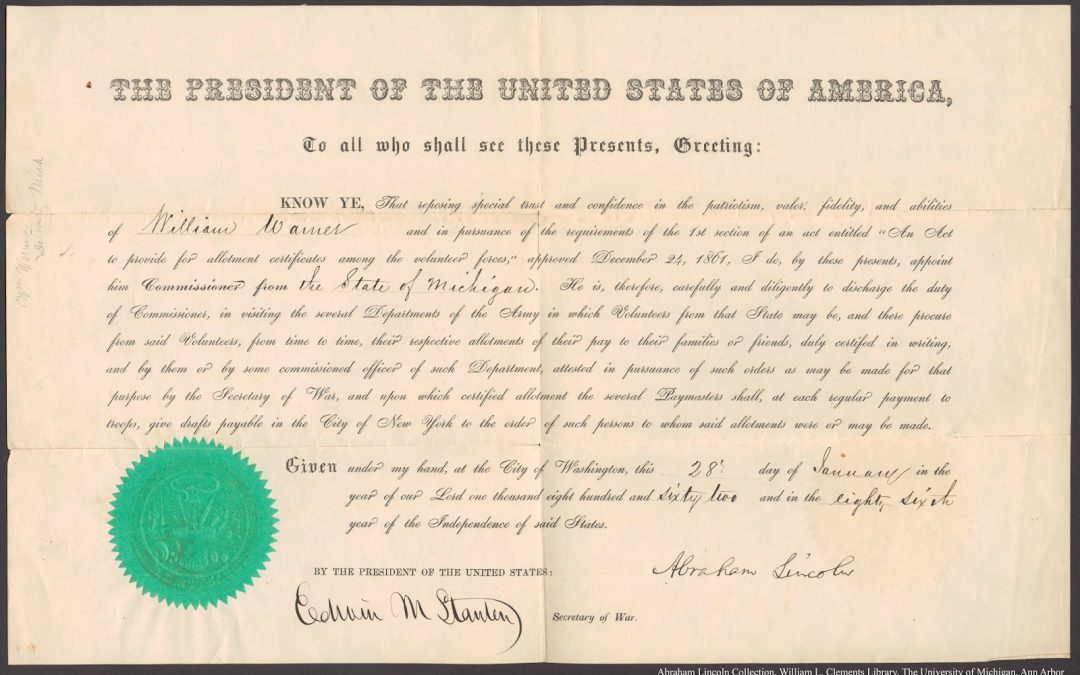
New Finding Aids: December 2018 to January 2019
The Clements Library is pleased to announce that the following collections are now described online and may be requested for use in the reading room. James Buchanan Letters, 1866-1869 - Processed by Cari Griffin This collection contains 10 letters written by James Buchanan, an attorney in Tidioute, Pennsylvania. Composed over a three-year period and all addressed to Philadelphia attorney John Samuel, Buchanan commented on politics and literature, as well as concerns related to his profession....

Latest Quarto: From the Front
The Winter-Spring 2019 Quarto is now available. The Quarto is a semi-annual magazine published by the William L. Clements Library and sent to the Clements Library Associates. Brian L. Dunnigan shares with readers that this will be his final issue working as longtime editor of The Quarto, as his retirement approaches later this year. Editorial duties will be assumed by Terese Austin, Head of Reader Services at the Clements. This issue of The Quarto focuses on correspondence between...

Recent Acquisition: A U.S. Government Official’s Description of a Mixed-Race Lead Actress on the Baltimore Stage, 1796
Research projects can begin in a variety of different ways. On one end of the spectrum, a query about some aspect of the past may prompt the scholar to seek out and identify relevant primary sources that help answer their question. On the opposite end, a scholar may discover source materials that lead them on an entirely new path of research, with new queries that they had not thought to ask before. That is, sometimes the questions draw researchers to primary sources and sometimes the primary...

Women’s Voices from the Starry Family Correspondence
As one of the Clements Library's Diversity, Equity, and Inclusion (DEI) interns, I was tasked with conserving and providing descriptions of manuscript collections that feature historically underrepresented perspectives and subject matter. The collections selected for the DEI projects were high priorities because of their need for conservation and for descriptive cataloging. As a result of the manuscripts' damaged states, many were unreadable and inaccessible to researchers, students, and...

The First Published African-American Composer
Portrait courtesy of IMSLP.org The earliest published African-American composer in the United States is Francis “Frank” Johnson (1792-1844), whose international musical career first flourished in Philadelphia, the city of his birth. Johnson lived through the era of slavery and gradual emancipation in Pennsylvania. During this process, African Americans began to congregate and form societies, churches, and schools. This included religious and musical societies, which helped the Philadelphia...

The Most Beautifully-Bound Newspaper in the Library
Most of the 18th and 19th century American newspapers in the Clements Library collections have bindings that are functional rather than artistic. Many volumes have been rebound in 20th century olive green cloth and either green paper or plain gray boards. The older leather bindings are often much-repaired, showing evidence of their heavy use over the years. In some cases, layers of glue and tape are all that hold the spines together. While a number of our newspapers bindings include lovely...

“Discover Series” programs treat you to an up-close view of historical materials and work at the Clements Library
Last fall the William L. Clements Library launched a new type of program, the “Discover Series,” to great response. The goal was to provide in-depth coverage of various aspects of the library’s work, in a smaller, more informal setting and with time for discussion. While our lecture series allows scholars to share their historical research, the Discover Series is inspired by the work of the library’s staff. With the success of the inaugural events, the Clements Library is now pleased to...

Printing and Painting Perry’s Victory on Lake Erie
Nestled in the Clements Library's Oliver Hazard Perry Papers are remarkable documents detailing the commodore's naval career, with some 200 pieces highlighting his service in the War of 1812. In September of 1813 he famously won the Battle of Lake Erie, a victory that secured American control of the Great Lake and ensured their claims to the surrounding region following the end of the war. Such an important naval battle garnered much recognition in the immediate aftermath, catapulting Perry to...

William L. Clements Library Research Fellowships for 2019
After visiting the Clements Library, one of our fellows had this to say about the experience: “The Clements Library not only has an amazing variety of rich collections but also an incredibly helpful, professional staff. During the approximately two and a half months I spent as a Fellow at the William L. Clements Library, I was able to make significant progress on my book manuscript. I made extensive use of the library's rich collections of manuscripts, rare books, maps, and graphic materials....

What’s in Your Attic? Treasures Big and Small
The William L. Clements Library invited members of the public to join us on Sunday, September 30, 2018, for an event we called "What's in Your Attic?" We encouraged attendees to bring their own paper treasures, such as letters, journals, photographs, prints, books, and maps, for discussion with Clements Curators and guest Americana collectors. Our intentions were to garner enthusiasm for the Clements Library, gain some knowledge of exciting materials currently stewarded by private owners,...

